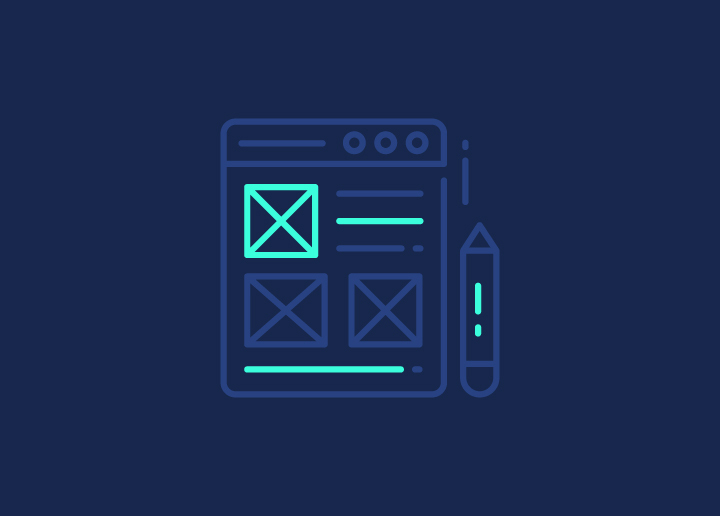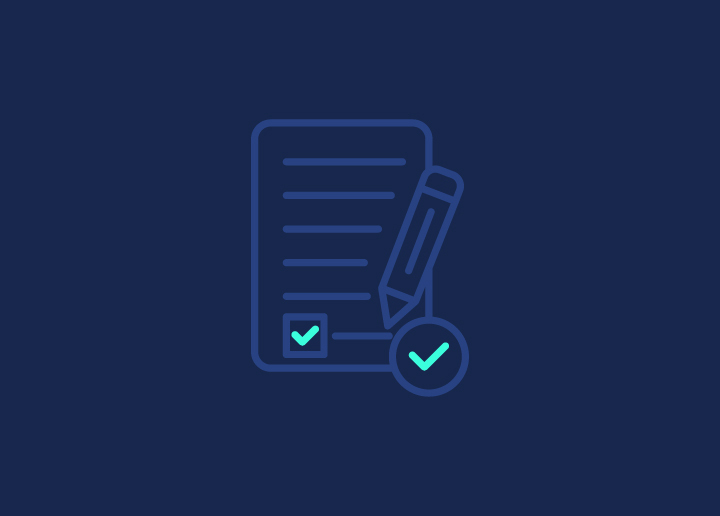What’s the first thing that pops into your mind when you hear “website design”? Is it vibrant colors, engaging graphics, or perhaps a seamless user interface? Crafting a compelling website is an art that combines creativity, strategy, and an understanding of the digital world’s intricacies. Most seasoned professional website designers have mastered the art of crafting well-optimized, custom websites that drive conversions.
However, if you are new to website design, here are the key aspects of professional website design you must know. From finding inspiration to choosing the right website builder for your project, here are the top web design tips for creating a website that looks good and drives engagement and success!
Contents
ToggleTip 1: Unlocking Your Creativity in Website Design
Unlocking creativity in website design involves tapping into various sources for inspiration. Engaging with online design communities, exploring new cultures, and drawing insights from media and art. This can help you generate fresh ideas, ultimately making your vision a reality. Here are some inspirational web design ideas that might fuel your creativity, enabling you to design a website that truly appeals to your target audience.
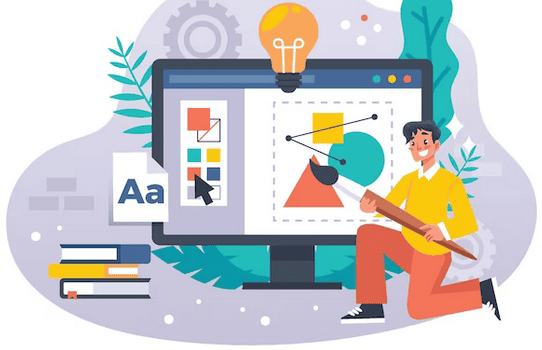
Travel and Exploration
Traveling can push one to explore beyond one’s comfort zone, thus providing new perspectives that can be used to create captivating experiences for website visitors. Immersing in various cultures and environments opens you up to diverse ideas, potentially sparking innovation and enhancing your web page design. So, don’t hesitate to venture out and draw inspiration from the world around you.
Online Communities and Resources
Online design communities are a treasure trove of knowledge and inspiration for your website design project. You can discover many website design ideas, templates, and expert advice on platforms like Dribbble, Behance, and Pttrns. Participating in a web design contest can also be a great way to showcase your skills and learn from others. Participating in design conferences and Reddit forums will further enhance your exposure to new techniques and styles, inspiring you to create a visually stunning and unique website.
Media and Art
Media and art are useful sources for innovative design ideas, including color palettes and visual components. By interpreting visual content, you can create an appealing website that complements your content marketing strategy. When selecting a color scheme and typography, ensure they are consistent with your brand message.
Read: How To Quickly Change The Admin Color Scheme In WordPress
Tip 2: Essential Elements of a Successful Website Design
A successful website design not only looks visually stunning but also provides a seamless user experience through visual hierarchy, intuitive user interface, and responsiveness. Incorporating website design ideas that focus on these elements is critical in:
- Establishing a desired corporate identity
- Conveying brand message
- Attaining consistent growth in sales and revenue
- Constructing trust with customers.
The following segment sheds light on the significance of these crucial components in curating a captivating and efficient website.
Read: New Web Design Trends In 2023
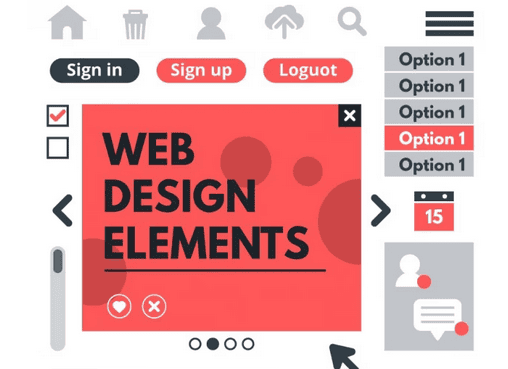
Visual Hierarchy
Organizing your website’s visual hierarchy by prioritizing crucial information higher on the page while adhering to technical SEO best practices is essential for guiding users through your website and enhancing user engagement. Utilizing visual cues such as arrows and buttons can facilitate navigation and increase conversions.
Also, prioritizing content “above the fold,” or within the initial view of the website, ensures your audience has all the necessary information to understand your brand and take the desired action.
User Interface and Navigation
A well-designed user interface and intuitive navigation are integral to providing a seamless user experience. User interactions such as scrolling, clicking, and typing should be smooth and effortless, allowing visitors to easily navigate your web pages and access relevant information. Implementing a clear and straightforward navigation system enhances user experience, which, in turn, boosts engagement and conversions.
Responsiveness and Adaptability
Today, a responsive and adaptable website design is paramount for ensuring optimal viewing and interaction across various devices and screen sizes. Creating a mobile-friendly design and optimizing images for various platforms ensures a top-notch experience for viewers across all devices. This, in turn, encourages them to revisit and interact with your content.
Related: Difference Between A Mobile Site And A Responsive Site
Tip 3: Choosing the Right Website Builder for Your Project
Selecting the right website builder for your project is crucial in achieving the desired outcome and bringing your vision to life. With various website builders available, such as:
- WordPress
- Wix
- Squarespace
- Pagecloud
- Webflow
It’s essential to consider their features, ease of use, and customization options to find the best fit for your needs. The following segment offers an overview of WordPress and other popular website builders. This will assist you in making an informed decision for your project.
WordPress
WordPress is a leading website builder, holding the number one spot in the market. It powers over 40% of all websites on the internet, a statistic that speaks volumes about its popularity and reliability. WordPress’s dominance can be attributed to its flexibility, ease of use, and a vast library of themes and plugins that allow extensive customization. It offers both a free, open-source platform (WordPress.org) for self-hosted websites and a commercial platform (WordPress.com) for those who prefer a managed WordPress hosting solution.
The key reason WordPress is #1 compared to other website builders is its versatility. It caters to a range of users, from beginners to experienced web developers. It is suitable for creating any website, be it a blog, business site, portfolio, or online store. The platform’s open-source nature also means that it benefits from the contributions of a large community of WordPress developers & designers, who continually enhance its functionality and security.
Related: How To Migrate From WordPress.com To WordPress.org
Squarespace and Wix
Wix and Squarespace are user-friendly website builders that offer a variety of design features and templates to suit different business needs. Wix is known for its extensive selection of features and templates, making it suitable for beginners. At the same time, Squarespace provides a comprehensive suite of features, including a drag-and-drop editor, eCommerce tools, and analytics.
Both platforms are excellent options for website design, so it’s recommended to take advantage of their free trials to determine the best fit for your project.
Read: Wix To WordPress Migration 2023: Easy Guide
Webflow and PageCloud
PageCloud and Webflow cater to experienced designers who require more advanced design capabilities and customization options. PageCloud is renowned for its user-friendly drag-and-drop builder that enables quick and easy editing and the creation of less complex websites. Webflow is highly acclaimed for its sophisticated design features.
As with Wix and Squarespace, exploring the free trials offered by both platforms before making a decision is advisable.
Read: Best White Label Website Builders
Tip 4: eCommerce Website Design Tips
Designing a conversion-optimized eCommerce website requires attention to detail in product presentation, a seamless checkout process, and mobile optimization. By focusing on these components, you can create an engaging, user-friendly website that drives conversions and customer satisfaction. As such, here are some tips on optimizing your eCommerce website for an enhanced shopping experience.
Read: eCommerce World-class Shopping & UI Design Experience
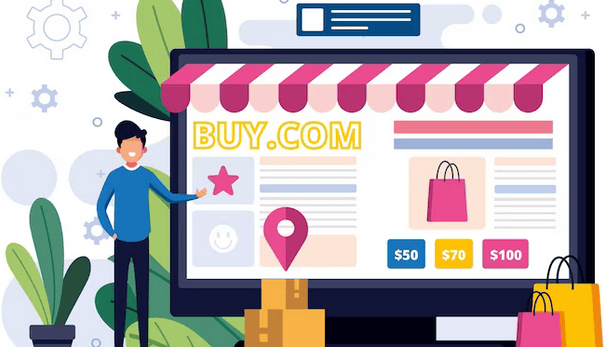
Product Presentation
Showcasing your products with high-quality images, detailed descriptions, and easy navigation is vital in capturing your audience’s attention and encouraging them to explore your online store. Create high-quality product images using your own product photos, which should be high-resolution, crisp, and vivid.
Use natural lighting and avoid filters or effects, as it could distort the product’s actual color. Furthermore, ensure that product descriptions are comprehensive & straightforward, providing necessary information to potential customers.
Further Read: Basic Principles Of Website Design That Drives Sales
Seamless Checkout Process
A smooth and secure checkout process drives conversions and ensures customer satisfaction. To create a seamless checkout experience, provide explicit instructions, offer multiple payment options, show shipping costs in advance, and provide customer support. Additionally, ensure the checkout process is secure to foster trust with customers and promote repeat purchases.
Read: WooCommerce Maintenance Guide: Everything You Need
Mobile Optimization
Optimizing your eCommerce website (online store) for mobile devices is essential in providing a seamless and engaging shopping experience. To optimize your website, consider:
- Creating a mobile-friendly web design
- Optimizing images
- Avoiding Flash and pop-ups
- Taking geolocation into account
- Implementing other strategies to ensure a better mobile experience.
Read: How To Speed Up Your eCommerce Website
Tip 5: Boosting Website Performance and Search Engine Optimization
To improve your website’s performance and search engine ranking, optimizing images, fonts, and utilizing various SEO tools and techniques is crucial. Implementing these strategies can enhance the overall user experience, increase visitor engagement and retention, and improve your website’s visibility on search engines.
Optimizing Images and Fonts
Limiting the use of large images and fonts is essential in ensuring faster loading times and a better user experience. To optimize images, use high-quality images of the right file type (JPEG or PNG) and resize them to enhance page speed and load time. When selecting fonts, prioritize those optimized for speed and limit the number of fonts used on your website.
Related: WebP vs PNG: Which Image Format Is Right for Your Website
SEO Tools and Techniques
Utilizing SEO tools and techniques can significantly improve your website’s ranking and visibility on search engines. Some of the top SEO tools and techniques include:
- Ahrefs
- SEMrush
- Surfer
- Google Search Console
- Google Trends
Related: SEMrush vs Ahrefs
These SEO tools can help you optimize titles and meta descriptions, craft keyword-rich content, utilize internal and external links, and leverage social media. By employing these tools and techniques, you can enhance your website’s load time & performance and attract more visitors.
Need Help Optimizing Your Current Website?
Check out our managed SEO services to know how we can help you optimize your website for users and search engines.
Tip 6: Engaging Site Visitors With Unique Design Features
Creating a captivating website requires engaging your site visitors through unique design features, including custom animations, bold color schemes, and impactful typography. Participating in a website design contest can be a great way to find a professional website designer who can help you achieve this goal.
Read: Web Design Process To Create An Awesome Website
Custom Animations and Interactions
Custom animations and interactions can add personality and depth to your website while enhancing the overall user experience. By incorporating subtle animations and interactive elements, you can capture your audience’s attention and encourage them to engage with your content. To create effective custom animations and interactions, follow UI/UX principles and utilize CSS animation techniques. However, avoid excessive animations as that may distract or annoy users.
Bold Color Schemes and Typography
Experimenting with bold color schemes and typography can create a memorable website design. By utilizing bright, vibrant colors and eye-catching fonts, you can generate a distinctive and captivating aesthetic that resonates with your target audience. When selecting a color scheme and typography, ensure they are consistent with your brand message while also maintaining adequate contrast and readability.
Read: WordPress Pricing: How Much Does A WordPress Website Cost
Summary
Creating a captivating website design involves unlocking your creativity, focusing on essential elements such as user experience and responsiveness, and choosing the right website builder for your project.
Key Takeaways
- Unlock creativity and realize a unique website design through online communities, travel, and media & art.
- Utilize visual hierarchy, user interface/navigation optimization & responsiveness to create an effective web presence.
- Engage site visitors with custom animations, bold color schemes & impactful typography for maximum effect.
By implementing the tips and techniques discussed in this blog post, you can create a visually stunning and engaging website that stands out from the competition and drives conversions. So, go ahead and unleash your creativity, experiment with bold design features, and watch your website come to life.
Read: Insurance Website Design Ideas
Curious To Know About Our Web Design Services?
Discover what we offer as part of our web design services to individuals, businesses, and agencies.
Website Design: Frequently Asked Questions
If you hire a professional web design agency, expect to pay around $1000 to $2,000 for a simple website. For bigger, more complex websites, you should be prepared to pay $5,000 or more.
To design your own website, use a platform like WordPress to pick and customize a website template, add content and elements, and then publish the site. Additionally, consider setting a goal for the site, defining its layout, claiming a domain name, gathering content, and testing it before the launch.
The key to successful website design is visual hierarchy, user interface, and responsiveness. Carefully consider each element for a positive user experience.
Optimize your eCommerce website for mobile devices by creating a mobile-friendly web design, optimizing images, avoiding Flash and pop-ups, and considering geolocation.
















